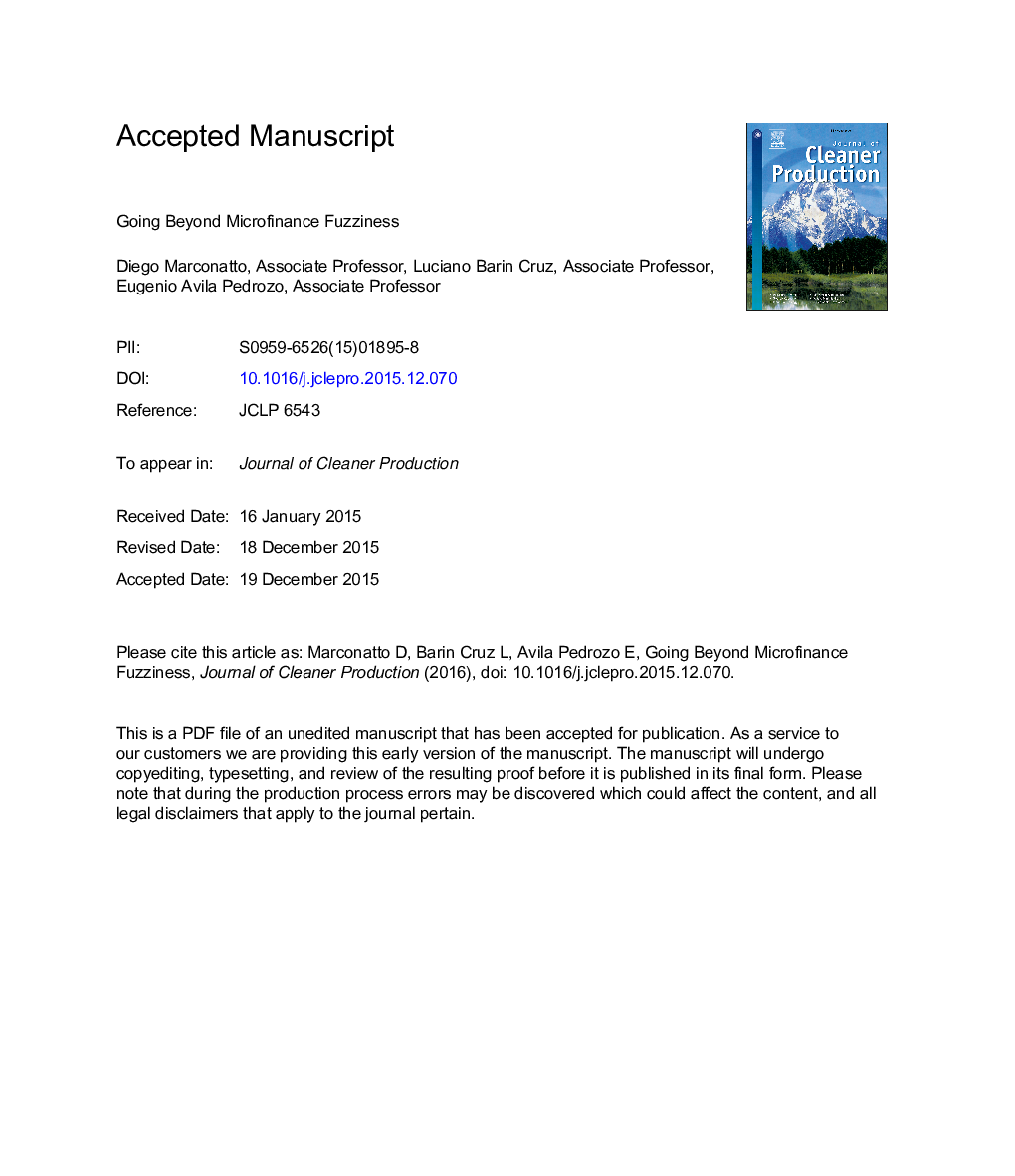| Article ID | Journal | Published Year | Pages | File Type |
|---|---|---|---|---|
| 8102617 | Journal of Cleaner Production | 2016 | 59 Pages |
Abstract
The astonishing propagation of microfinance institutions (MFIs) around the world has been followed by an indiscriminate proliferation of concepts for describing these organizations. These have in common the tendency to overlook the historical roots of microfinance, to disregard some types of MFIs, to impose arbitrarily discrete categories over a non-uniform field, and to neglect important constitutive attributes inherent to all MFIs. This conceptual fuzziness brings about several theoretical and practical obstacles. In this paper we address this issue by providing a two-dimensional framework built on the five constitutive attributes inherent to all MFIs to reduce microfinance conceptual blurriness. In doing so, we deliver a threefold contribution: 1) We address the call to reduce the conceptual fuzziness within the microfinance field by providing a tool for characterizing and distinguishing between the different MFIs based on their constitutive attributes across this industry. In addition, we advance the growing literature on microfinance that considers MFIs as hybrid organizations. 2) By exposing these five attributes, we dislocate the focus of policy makers from one idealistic (and limiting) best model of MFIs to account for a more diverse range of organizational configurations which provides the possibility of a better fit for their specific target public and context. 3) Finally we expose how the different types of microfinance can foster sustainable development.
Related Topics
Physical Sciences and Engineering
Energy
Renewable Energy, Sustainability and the Environment
Authors
Diego Marconatto, Luciano Barin Cruz, Eugenio Avila Pedrozo,
